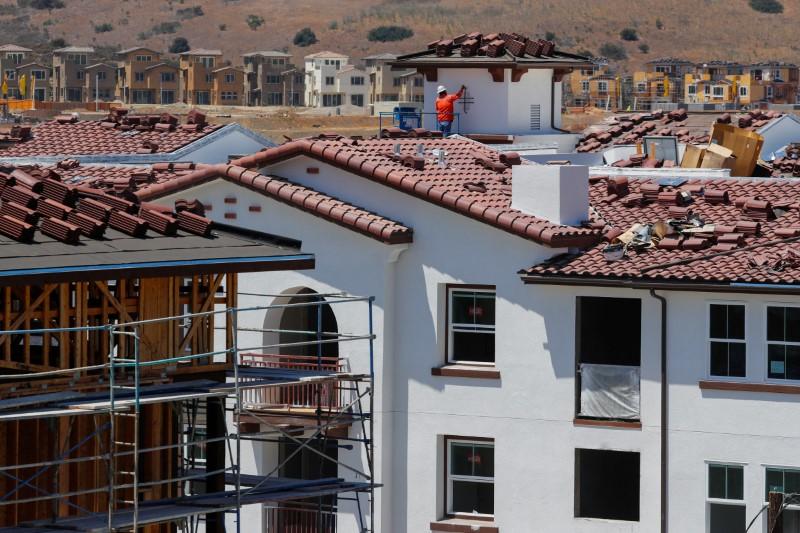Construction of new homes in the United States surged by a prediction-beating 22.6 percent last month as homebuilders continue their rebound from the COVID-induced slowdown and reinforcing the view that America’s housing market is a rare bright spot in the economic crisis triggered by the outbreak.
The Commerce Department reported Tuesday that new homes were started at an annual pace of 1.496 million in July, a sharp increase over June’s figure of 1.22 million and 23.4 percent higher than the July 2019 pace of 1.212 million.
Economists surveyed by Econoday expected new home construction to come in at 1.24 million, while those polled by Investing.com predicted 1.32 million, so the newly released figures are a surprise to the upside.
“U.S. housing starts blew the roof off of expectations in July ... these are the kind of gains seen after storms/hurricanes,” Jennifer Lee, senior economist at BMO Capital Markets, wrote in a research note.
Record-low interest rates have spurred buyer traffic, which, combined with a limited supply of housing stock, drove builders to break ground.
“Strong demand and a record level of homebuilder confidence will support housing starts in the second half of 2020,” economists Nancy Vanden Houten and Gregory Daco of Oxford Economics wrote in a note.

Mortgage rates have plunged during the pandemic, bolstered by the Federal Reserve’s massive asset-buying program that has seen the Fed’s balance sheet break $7 trillion. In March, the Fed jumped into the mortgage market with force as rates began to rise largely because investors were selling mortgage securities to raise cash to offset losses in melting stock markets. To put a lid on mortgage rate volatility, the Fed bought a combined $250 billion of mortgage securities in a two-week period in March, an amount that was $84 billion more than the central bank bought over any four-week period during the Great Recession. The Fed has since dialed down its mortgage security purchases to around $40 billion a month, the central bank said in a June release.
The Commerce Department’s Tuesday figures also showed that the big gains in new home building came from the construction of apartments and condominiums, which soared 56.7 percent. Single-family home construction also ticked up, though by a more modest 8.2 percent.
“Homebuyer demand remains strong, especially for those in search of an entry-level home where the improvement in affordability via lower mortgage rates has a material impact,” Khater said in the statement.
Construction rose all over the country, surging by 35.3 percent in the Northeast, 33.2 percent in the South, and 5.8 percent in both the Midwest and the West.

Applications for building permits, a good indication of future activity, jumped 18.8 percent from June to an annual rate of 1.5 million, the highest rate since January and up 9.4 percent from July 2019.
The National Association of Home Builders reported Monday that builders’ confidence this month matched the record high first reached in December 1998. But they warned that there remain risks to the economic outlook.
“The still-widespread coronavirus and an economy struggling to recover without fiscal support may limit the upside” for the housing industry, they wrote in the report.





